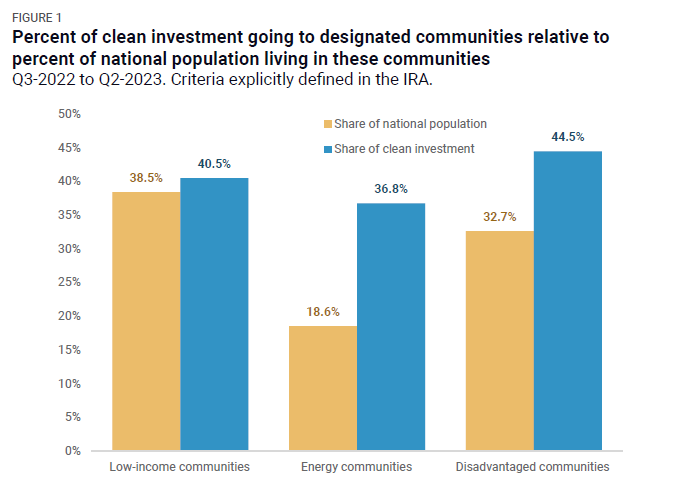Clean Investment at the Community Level
Using the Clean Investment Monitor, we assess how much investment is flowing to disadvantaged, low-income, and energy communities in the US.
The Inflation Reduction Act (IRA) contains multiple provisions that seek to incentivize clean energy investment in specific communities, such as low-income communities or communities that have traditionally produced fossil fuels (i.e., energy communities). These incentives take the form of additional tax credits and priority access to loans and grants. The Clean Investment Monitor’s (CIM) comprehensive facility-level investment data is uniquely suited to assess the extent to which actual—not just announced—investment is indeed flowing into these communities as legislators intended. In this note, we provide an overview of actual community-level investment trends in the first year following the IRA’s passage.
We find that these communities are successfully attracting an outsized share of national clean investment (Figure 1). The share of clean investment occurring in energy communities is nearly double the share of the national population living in these communities (36.8% versus 18.6%). The share of clean investment occurring in disadvantaged communities is considerably higher than the share of the national population residing there as well (44.5% versus 32.7%). Actual investment in low-income communities was also positively disproportionate to the portion of the national population residing therein (40.5% versus 38.5%).

It’s still too early to robustly evaluate the extent to which community-focused incentives in the IRA are shaping geographic investment trends, given that the implementing regulations for many of these incentives were only recently completed. Noting that 34.7% of actual investment in the year following the IRA came from projects announced after the IRA, we expect these trends will likely extend as more post-IRA project announcements turn to actual investment. We will continue to track community-level investment trends and publish our findings and underlying data on cleaninvestmentmonitor.org.